
Roots
There exists a quiet yearning within us, a subtle whisper that often surfaces when we consider the enduring strength and beauty of textured hair. It asks whether the echoes of distant eras, the practices honed by hands long past, hold a deeper knowing for our strands today. This section delves into the foundational truths, the very elemental understanding of hair and scalp that our ancestors, through their rituals, instinctively honored. We seek not to replicate ancient life, but to discern the enduring wisdom woven into their care, a wisdom that might offer unexpected clarity for our contemporary routines.
The journey into ancient scalp rituals begins with a recognition of hair itself, particularly its unique characteristics across diverse textures. For those with coils, kinks, and waves, the follicular structure presents a distinct reality. Unlike straight hair, which typically emerges from a round follicle, textured hair springs forth from an elliptical or oval-shaped follicle. This particular shape dictates the very curl of the strand, influencing its growth pattern and the way it spirals.
The cuticle, the outermost layer of the hair shaft, tends to be more open in textured hair, which, while allowing for greater product absorption, also means a quicker release of moisture. This anatomical blueprint forms the very basis of why textured hair often seeks different forms of sustenance and protection than its straighter counterparts.
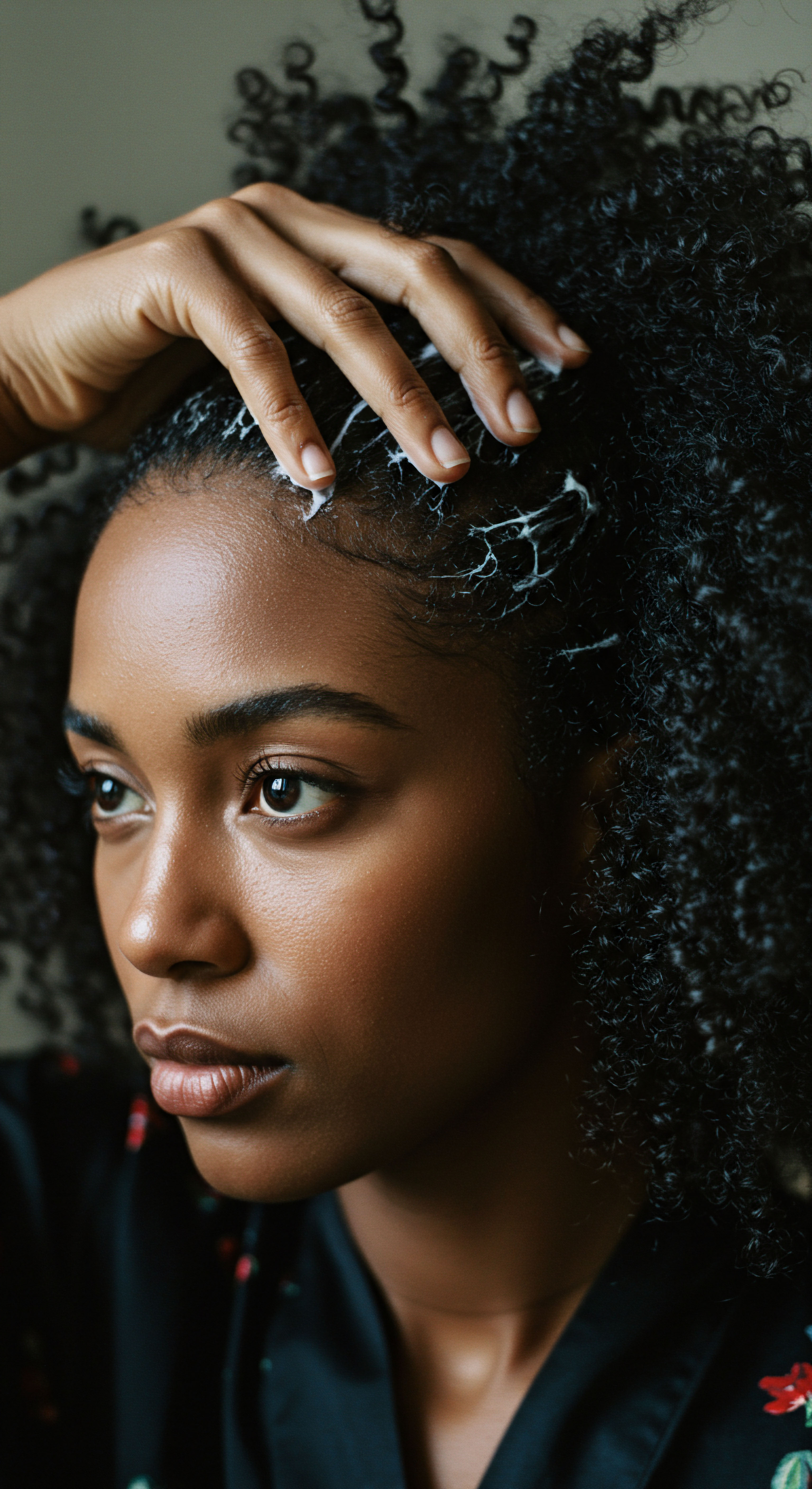
Understanding Scalp Physiology in Ancient Contexts
Beyond the strands, the scalp itself stands as the living ground from which hair springs. Ancient cultures, perhaps without modern scientific terminology, certainly understood the scalp as a vital organ, a sensitive expanse requiring dedicated attention. They perceived it as the seat of hair health, recognizing that a vibrant scalp often meant vibrant hair. The skin of the scalp, with its intricate network of blood vessels, nerve endings, and sebaceous glands, serves as a dynamic ecosystem.
It provides the nutrients essential for hair growth and acts as a protective barrier. When we consider historical practices, it becomes apparent that many rituals were designed to maintain this delicate balance, intuitively supporting the scalp’s inherent functions.
Historical societies often developed sophisticated classifications for hair, sometimes based on visual characteristics, other times tied to spiritual or social significance. The specific language they employed to describe hair textures and conditions reflected their deep observation and intimate relationship with their own hair. These classifications, while not always aligning with modern trichological systems, nevertheless underscore a long-standing appreciation for the diversity of human hair. This rich lexicon provides a glimpse into how deeply hair was considered and understood within various cultural frameworks.
Ancient traditions, through their intuitive practices, often honored the distinctive anatomical characteristics of textured hair and the vital role of the scalp.
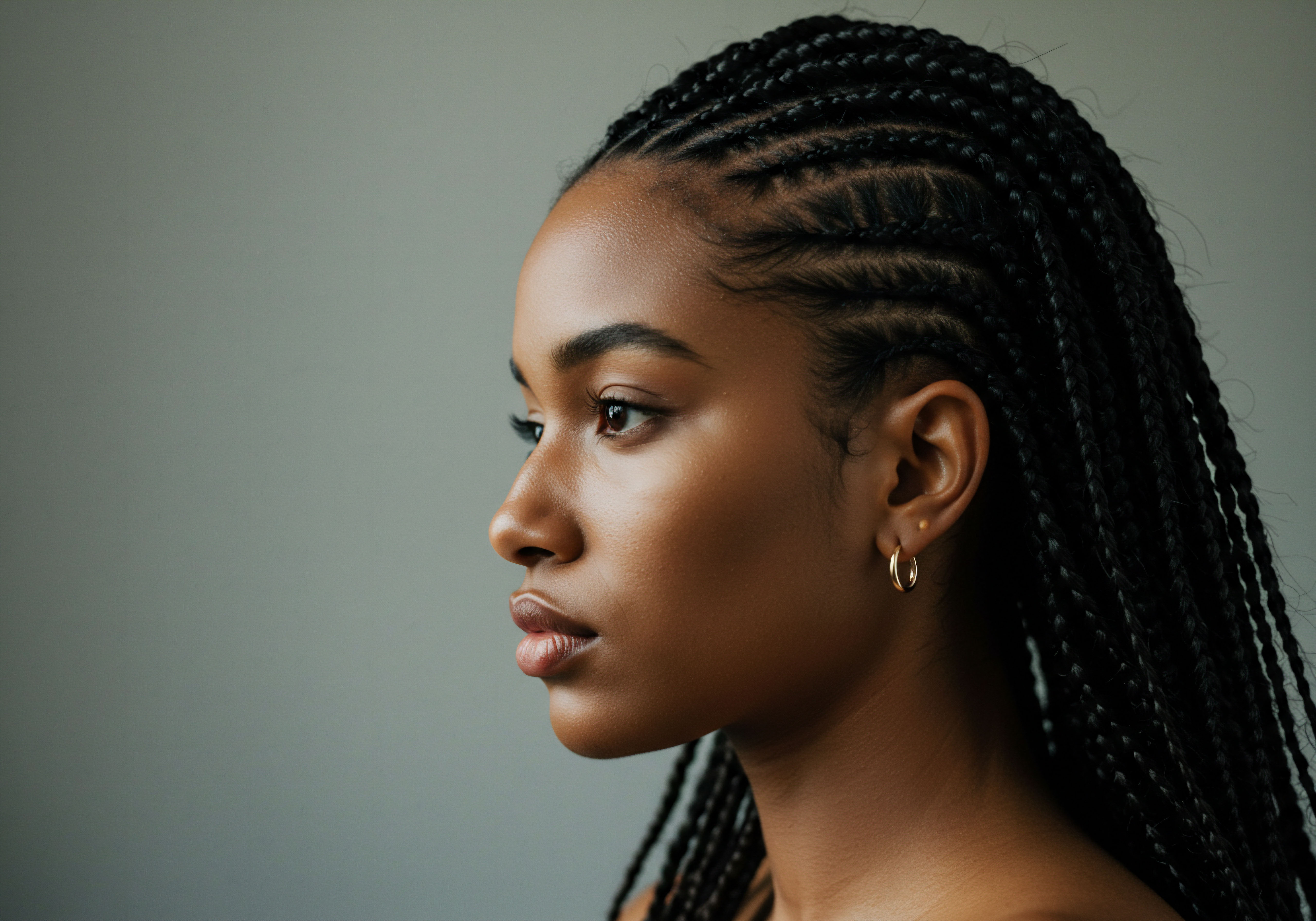
The Flow of Hair Growth Through Time
The rhythmic cycle of hair growth, shedding, and rest is a universal biological process. Ancient civilizations, observing the natural world, likely recognized these patterns in human hair. Their rituals often aligned with these cycles, perhaps offering more intensive care during periods of growth or gentle preservation during phases of rest. Factors influencing hair health, such as diet, environmental conditions, and general wellbeing, were also implicitly addressed within their holistic approaches to health.
For instance, traditional diets rich in essential nutrients would have naturally contributed to robust hair growth, even if the direct biochemical links were unknown at the time. This deep-seated observation of natural processes informed their enduring hair care wisdom.
The essential lexicon of textured hair, as it stands today, owes much to both scientific discovery and the collective experience of those who live with these hair types. Terms like Porosity, Density, and Curl Pattern (from 2A to 4C) allow for a precise discussion of hair needs. However, looking back, we find that ancient societies also possessed their own descriptive vocabularies, often rooted in sensory experiences or natural analogies. The study of these historical terms can reveal a continuity of human experience with hair, demonstrating that the pursuit of understanding our strands is not a recent endeavor but a timeless human concern.
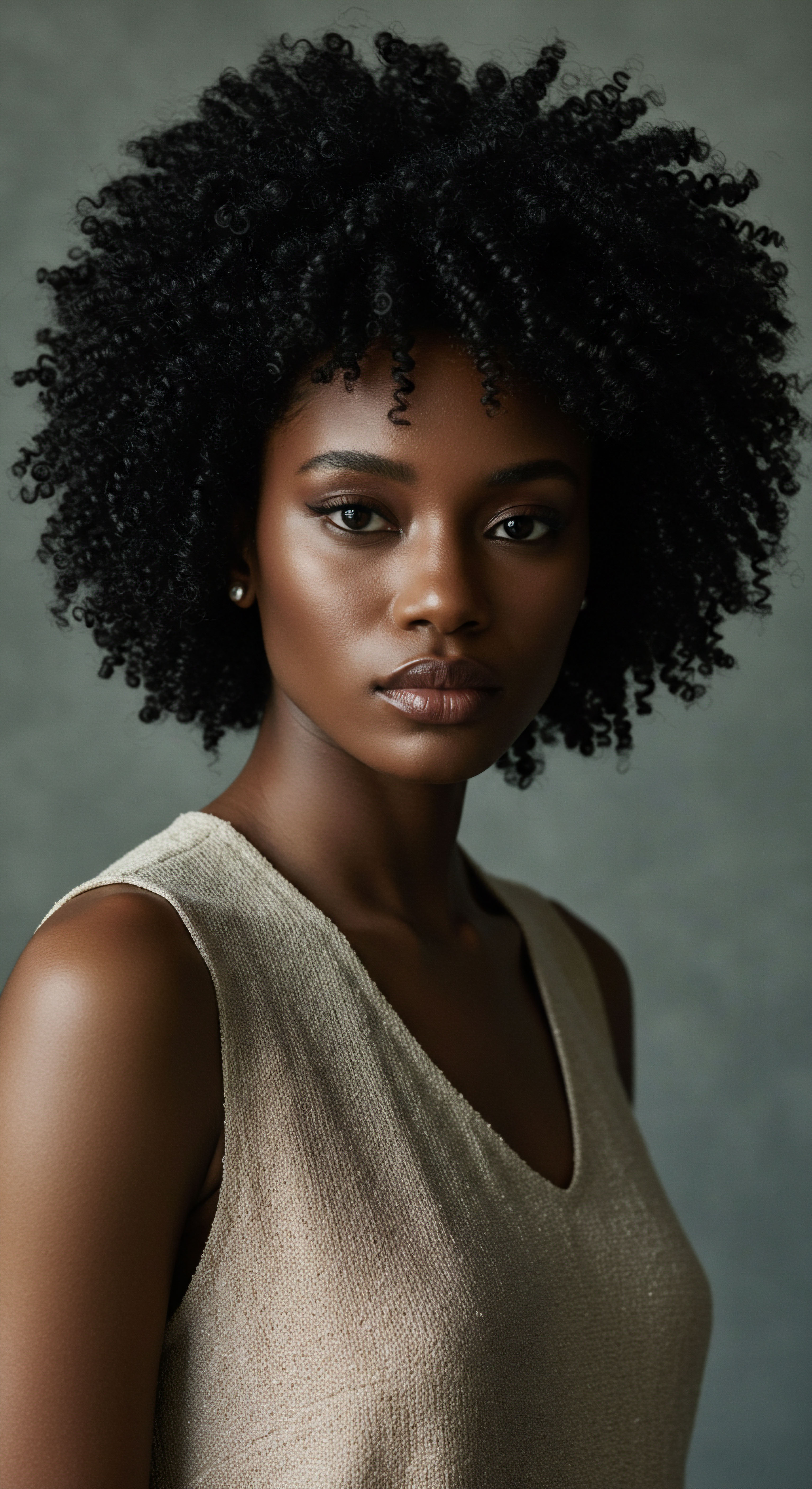
Ritual
Our daily rhythms, those small, often unconscious acts, hold the potential for profound transformation. This section invites a consideration of how the deliberate, mindful movements of ancient scalp rituals can lend a quiet power to our modern textured hair routines. It is about stepping beyond the hurried application of products and entering a space where care becomes a practiced art, a gentle dialogue with our strands and scalp. We seek to uncover the practical wisdom embedded in historical practices, offering actionable insights for the here and now, allowing techniques and methods to be explored with a guiding touch.
At the heart of many ancient hair care systems lay a profound understanding of cleansing, often far removed from the stripping agents prevalent in early modern shampoos. Instead, historical cultures utilized the gifts of the earth ❉ saponin-rich plants, purifying clays, and gentle herbal infusions. Consider the use of Shikakai (Acacia concinna) and Reetha (Sapindus mukorossi) in Indian traditions, or various plant-based lathers across African and Indigenous American cultures.
These natural cleansers worked to remove impurities without disturbing the scalp’s delicate pH or stripping the hair of its essential oils. Their efficacy lay in their gentle yet thorough action, respecting the hair’s natural balance rather than disrupting it.
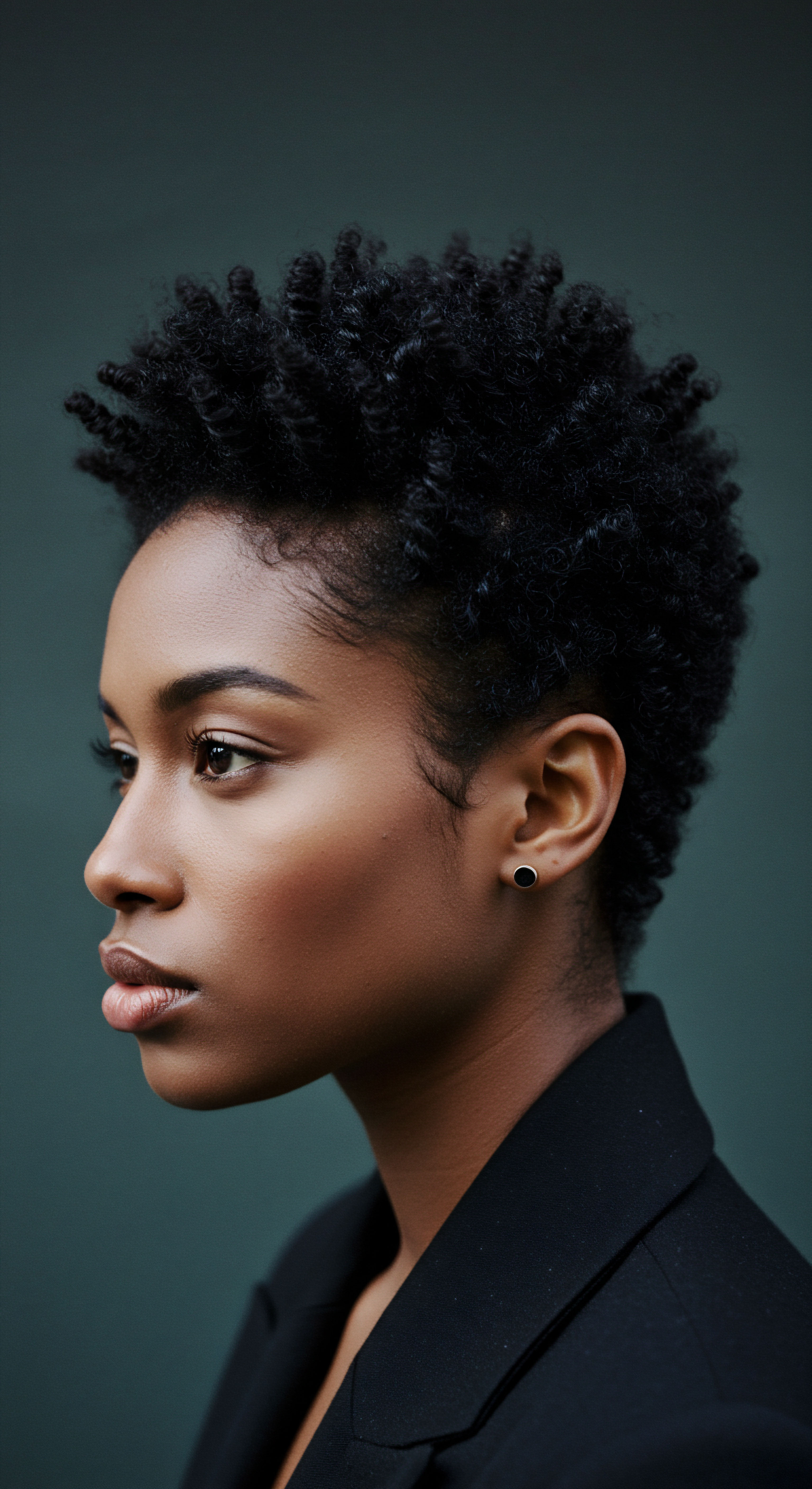
Nourishing Strands Through Time
The concept of conditioning and nourishing hair is as old as hair care itself. Ancient rituals frequently incorporated a rich array of plant oils, butters, and botanical infusions. Olive oil in the Mediterranean, coconut oil in tropical regions, shea butter in West Africa, and various seed oils globally served not merely as superficial coatings but as deep treatments.
These emollients provided essential fatty acids, vitamins, and antioxidants, sealing in moisture and imparting a lustrous sheen. The application was often a slow, deliberate process, allowing the warmth of the hands to aid absorption, transforming a simple act into a moment of focused care.
Ancient practices often emphasized gentle cleansing and deep nourishment, utilizing nature’s bounty to sustain hair health.
Protective styling, in its myriad forms, has been a cornerstone of textured hair care for millennia. Braids, twists, cornrows, and various forms of hair wrapping served not only aesthetic purposes but also provided crucial protection against environmental stressors and mechanical damage. These styles minimized manipulation, allowing hair to retain moisture and length.
The artistry involved in these styles often carried cultural significance, passing down techniques and patterns through generations. From elaborate Egyptian braids to intricate African threading, these styles were practical expressions of care and cultural identity.
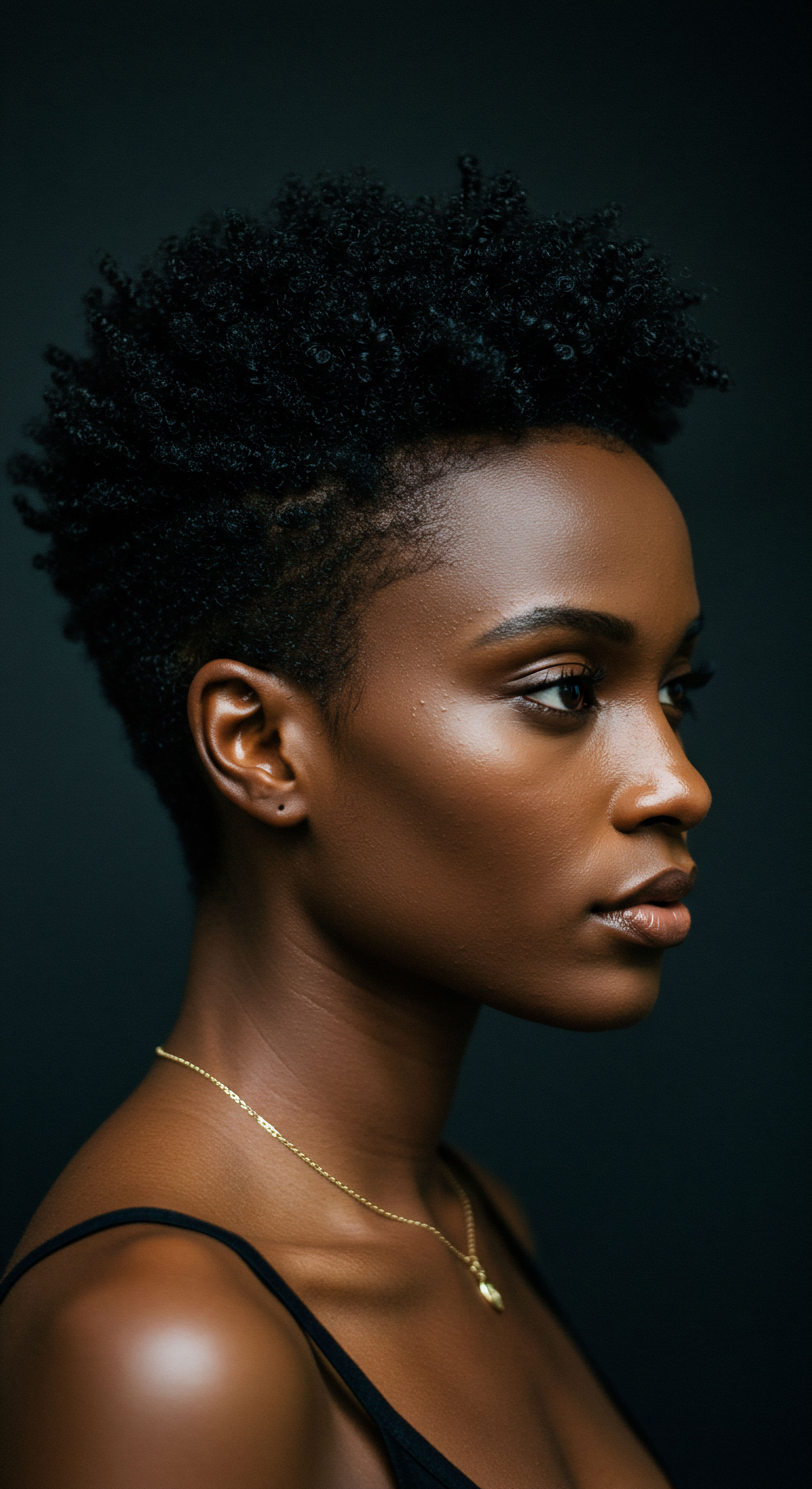
The Mindful Approach to Hair Care
Beyond the tangible ingredients and techniques, a significant element of ancient rituals was the mindful, almost meditative, approach to hair care. The act of washing, oiling, and styling was often a communal or personal ceremony, performed with intention and presence. This stands in stark contrast to the rushed, often stressful, modern routine. The slower pace allowed for thoroughness, but also for a connection to the self and to the materials being used.
This inherent mindfulness could reduce stress, an often-overlooked factor in hair health, and foster a deeper appreciation for one’s hair. The ritualistic nature of these practices imbued them with a sense of purpose beyond mere cosmetic enhancement.
Consider the systematic application of herbal pastes or oil blends. This was not a quick smear but a methodical process, often involving massage and careful distribution. This methodical approach ensured that each strand received attention, and the scalp was thoroughly addressed. The sensory experience – the scent of herbs, the warmth of oils, the gentle touch – contributed to the holistic benefit, turning a routine task into a calming experience.
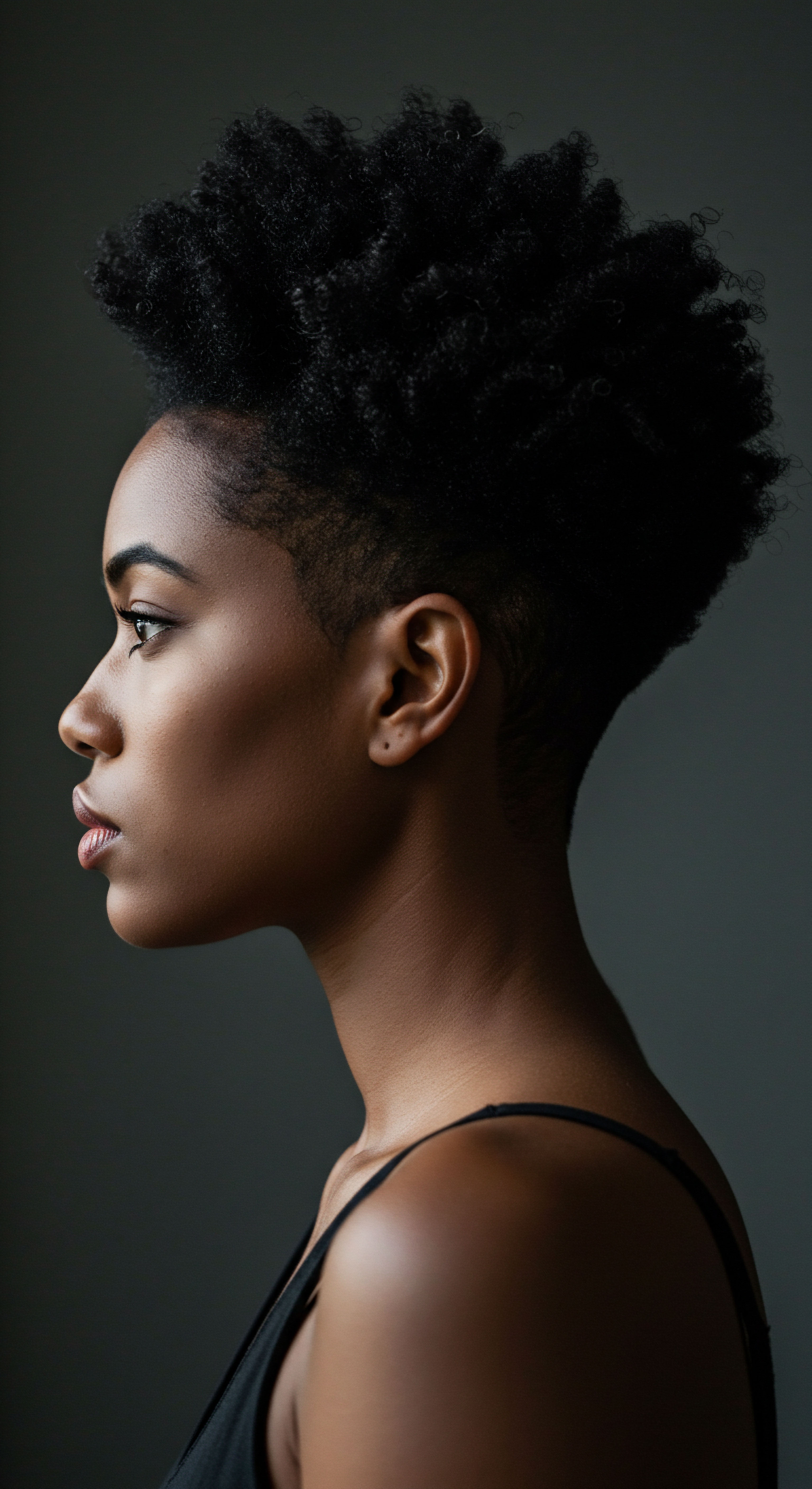
Relay
How might the intuitive wisdom of ancient scalp rituals truly converge with the precise findings of modern science, offering a profound lens through which to view textured hair routines? This section delves into the intricate interplay where cultural continuity meets contemporary understanding, where practices passed down through generations find validation in laboratories and research papers. We consider the less apparent complexities that the query unearths, inviting a deeper consideration of biological, psychological, and cultural factors.
The scalp, a vibrant landscape, hosts a complex community of microorganisms known as the Scalp Microbiome. Modern dermatology increasingly highlights the importance of a balanced microbiome for scalp health and, by extension, hair growth. Ancient cleansing and nourishing practices, often relying on plant-based ingredients with antimicrobial or anti-inflammatory properties, likely fostered a healthy scalp environment, albeit unknowingly. For instance, the use of clay washes or herbal rinses could have gently exfoliated the scalp, removed excess sebum, and introduced beneficial compounds without disrupting the natural microbial equilibrium, a stark contrast to harsh modern sulfates that can strip the scalp’s protective layer.

Can Scalp Massage Really Thicken Hair?
A widespread element in ancient hair care traditions was the practice of scalp massage. From Ayurvedic head massages to various cultural rituals involving vigorous or gentle manipulation of the scalp, this tactile stimulation was believed to promote hair vitality. Modern science offers compelling evidence to support this intuitive wisdom. A study by Koyama et al.
(2016) investigated the effects of standardized scalp massage on hair thickness. Their findings revealed that regular, standardized scalp massage, performed daily for 24 weeks, led to an increase in hair thickness. The research indicated that the stretching forces induced by the massage stimulated the dermal papilla cells, which are crucial for hair follicle development and hair growth. This provides a direct, scientific validation for a practice deeply rooted in ancient traditions, suggesting that the mechanical stimulation of the scalp holds tangible benefits for hair density and health.
Scientific inquiry often validates ancient practices, demonstrating that tactile stimulation of the scalp can significantly influence hair thickness.

The Science Behind Botanical Care
Many botanicals utilized in ancient rituals possess properties that modern phytochemistry now identifies as beneficial for hair and scalp. For example, the anti-inflammatory compounds in certain herbs can soothe irritated scalps, while antioxidants found in plant oils can protect hair from environmental damage. Aloe Vera, used for centuries, is now recognized for its moisturizing and healing properties due to its polysaccharides and glycoproteins.
Similarly, the saponins in traditional cleansers act as natural surfactants, effectively cleaning without harshness. The collective wisdom of these ancient practices, often passed down through generations, effectively functioned as a vast, empirical laboratory, identifying effective botanical solutions long before their chemical compositions were understood.
The often-overlooked psychological dimension of hair care provides another powerful link between ancient rituals and modern wellbeing. The act of engaging in a ritual, whether personal or communal, can be deeply calming and stress-reducing. Chronic stress is known to contribute to various hair concerns, including excessive shedding and thinning.
By fostering moments of tranquility and self-care, ancient scalp rituals may have inadvertently mitigated the detrimental effects of stress on hair health. This psychodermatological connection suggests that the holistic experience of ritual, beyond its physical components, contributes significantly to hair vitality.
The enduring presence of these ancient practices, even in modified forms, speaks to their cultural resonance and efficacy. For many, continuing these traditions is not simply about hair care; it is about maintaining a connection to heritage, identity, and ancestral knowledge. This cultural continuity adds a profound layer of meaning to textured hair routines, transforming them from mere chores into acts of self-affirmation and celebration.
- Scalp Microbiome ❉ A balanced community of microorganisms on the scalp is crucial for health, a state often supported by gentle ancient cleansing.
- Dermal Papilla Cells ❉ These cells, stimulated by scalp massage, play a direct role in hair follicle development and hair thickness.
- Phytochemistry ❉ The study of plant compounds reveals the scientific basis for the efficacy of traditional botanical hair remedies.
| Aspect of Care Cleansing Agents |
| Ancient Ritual Approach Plant-based saponins, clays, herbal infusions (e.g. shikakai) |
| Modern Conventional Approach Synthetic surfactants (e.g. sulfates), detergents |
| Aspect of Care Nourishment Source |
| Ancient Ritual Approach Natural plant oils, butters, infusions (e.g. coconut oil, shea butter) |
| Modern Conventional Approach Chemically formulated conditioners, synthetic silicones |
| Aspect of Care Application Method |
| Ancient Ritual Approach Mindful, often lengthy massage, communal rituals |
| Modern Conventional Approach Quick, often rushed application, individualistic |
| Aspect of Care Underlying Philosophy |
| Ancient Ritual Approach Holistic wellbeing, connection to nature, spiritual significance |
| Modern Conventional Approach Problem-solution focused, cosmetic enhancement |
| Aspect of Care Ancient methods often prioritized gentle, natural ingredients and a mindful application, differing significantly from many modern synthetic-heavy routines. |

Reflection
The journey through ancient scalp rituals reveals not a prescriptive map for modern textured hair routines, but rather a guiding light. It suggests that perhaps the true insight lies not in specific ingredients alone, but in the enduring principles they embody ❉ gentleness, patience, a deep respect for the scalp as the source of hair’s vitality, and the quiet power of mindful intention. The whispers from the past encourage us to slow down, to listen to our hair, and to find serenity in the very act of care, allowing the beauty of our strands to simply be.
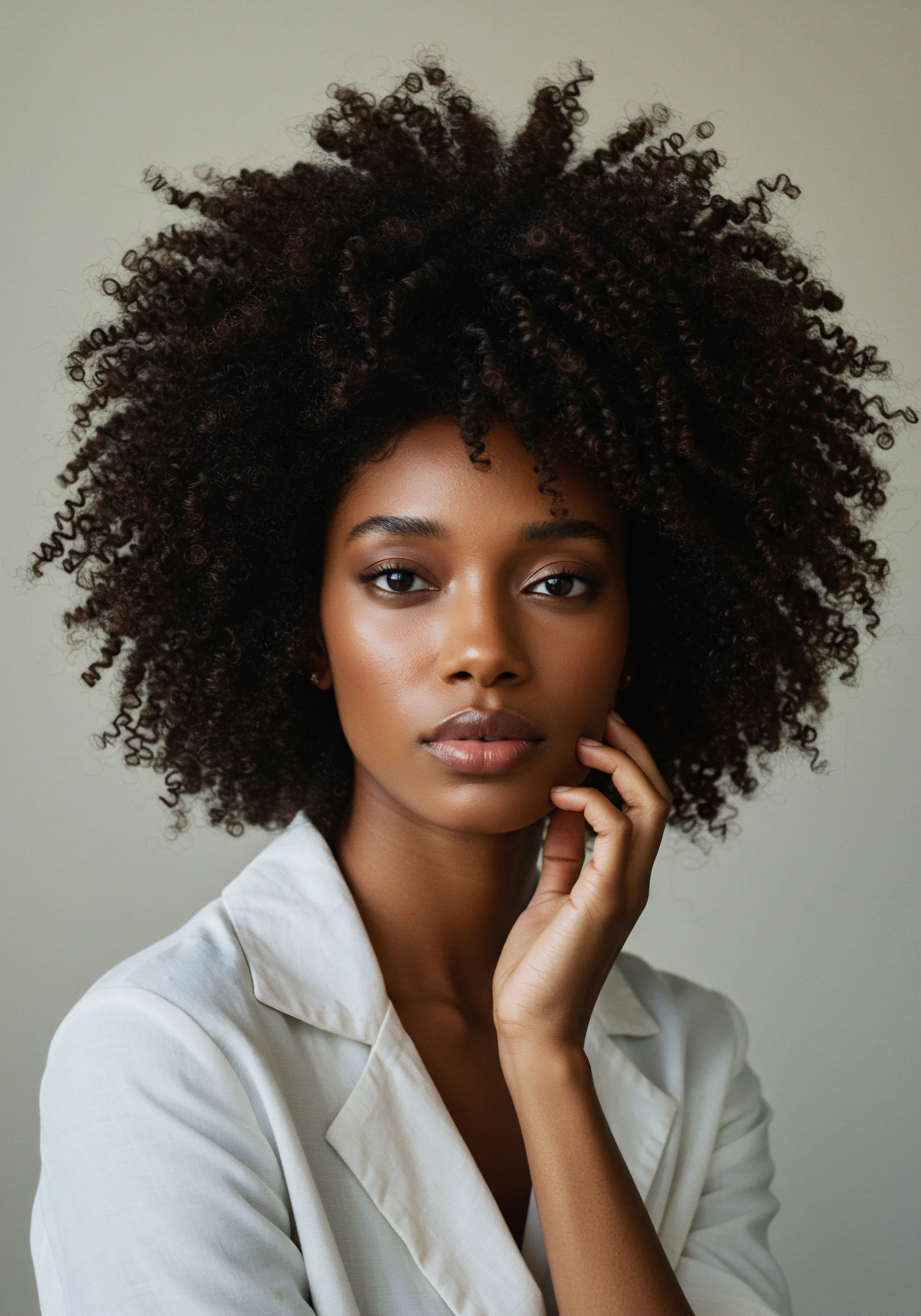
References
- Koyama, T. Kobayashi, K. Hama, T. Murakami, K. & Ogawa, R. (2016). Standardized Scalp Massage Results in Increased Hair Thickness by Inducing Stretching Forces to Dermal Papilla Cells in the Human Skin. ePlasty, 16, e22.
- Siddiqui, M. Z. (2010). Aloe vera ❉ A short review. Journal of Pharmacy and BioAllied Sciences, 2(3), 211–212.
- Chaudhari, A. D. & Singh, N. (2016). Hair Oils ❉ A Review. International Journal of Pharmacy and Pharmaceutical Sciences, 8(6), 28-32.
- Dawber, R. P. R. (2002). Hair and Scalp Disorders. CRC Press.
- Robbins, C. R. (2012). Chemical and Physical Behavior of Human Hair. Springer Science & Business Media.
- Draelos, Z. D. (2011). Hair Cosmetics ❉ An Overview. Journal of Cosmetic Dermatology, 10(1), 5-11.
- McMichael, A. J. (2007). Hair and Scalp Disorders in Ethnic Populations. Informa Healthcare.
- Abad, M. J. & Bermejo, P. (2007). Medicinal Plants for the Treatment of Hair Loss. Planta Medica, 73(07), 603-611.
- Gavazzoni Dias, M. F. R. (2015). Hair Cosmetics ❉ An Overview. International Journal of Trichology, 7(1), 2-15.
- Puri, H. S. (2003). Rasayana ❉ Ayurvedic Herbs for Longevity and Rejuvenation. CRC Press.